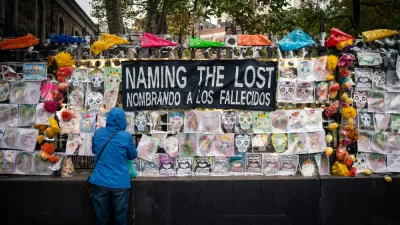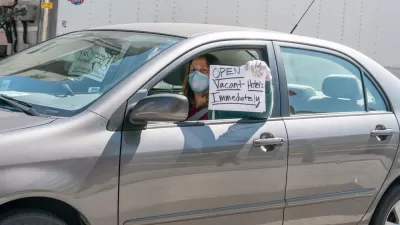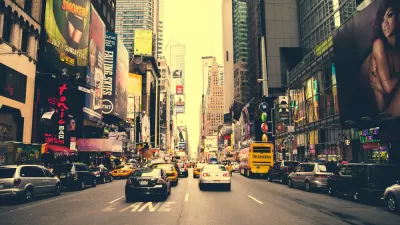The densest city in the country is struggling with the rapid spread of the virus, and close proximity is likely a primary factor.

"New York has tried to slow the spread of the coronavirus by closing its schools, shutting down its nonessential businesses and urging its residents to stay home almost around the clock. But it faces a distinct obstacle in trying to stem new cases: its cheek-by-jowl density," writes Brian M. Rosenthal.
The coronavirus is spreading throughout the city and region at an alarming rate. The high density puts people in close contact on public transit, in public spaces, and in apartment buildings.
Rosenthal also looks at Los Angeles, where the number of confirmed coronavirus cases and deaths are much lower than in New York City. The population of Los Angeles is half of New York City’s, with less crowded transportation, housing, and tourist spaces. In addition, other factors might be contributing to these differences, including warmer weather, less testing in Los Angeles, and better containment.
"Still, public health experts said that density was likely the biggest reason for why the virus has torn through New York City and not yet hit to the same degree elsewhere. They urged other cities and towns around the country to pay attention," says Rosenthal.
For more on the urban density debate that has grown from the spread of the pandemic and the public policy response, see previous coverage from Planetizen.
FULL STORY: Density Is New York City’s Big ‘Enemy’ in the Coronavirus Fight

Study: Maui’s Plan to Convert Vacation Rentals to Long-Term Housing Could Cause Nearly $1 Billion Economic Loss
The plan would reduce visitor accommodation by 25,% resulting in 1,900 jobs lost.

North Texas Transit Leaders Tout Benefits of TOD for Growing Region
At a summit focused on transit-oriented development, policymakers discussed how North Texas’ expanded light rail system can serve as a tool for economic growth.

Why Should We Subsidize Public Transportation?
Many public transit agencies face financial stress due to rising costs, declining fare revenue, and declining subsidies. Transit advocates must provide a strong business case for increasing public transit funding.

How to Make US Trains Faster
Changes to boarding platforms and a switch to electric trains could improve U.S. passenger rail service without the added cost of high-speed rail.

Columbia’s Revitalized ‘Loop’ Is a Hub for Local Entrepreneurs
A focus on small businesses is helping a commercial corridor in Columbia, Missouri thrive.

Invasive Insect Threatens Minnesota’s Ash Forests
The Emerald Ash Borer is a rapidly spreading invasive pest threatening Minnesota’s ash trees, and homeowners are encouraged to plant diverse replacement species, avoid moving ash firewood, and monitor for signs of infestation.
Urban Design for Planners 1: Software Tools
This six-course series explores essential urban design concepts using open source software and equips planners with the tools they need to participate fully in the urban design process.
Planning for Universal Design
Learn the tools for implementing Universal Design in planning regulations.
City of Santa Clarita
Ascent Environmental
Institute for Housing and Urban Development Studies (IHS)
City of Grandview
Harvard GSD Executive Education
Toledo-Lucas County Plan Commissions
Salt Lake City
NYU Wagner Graduate School of Public Service





























